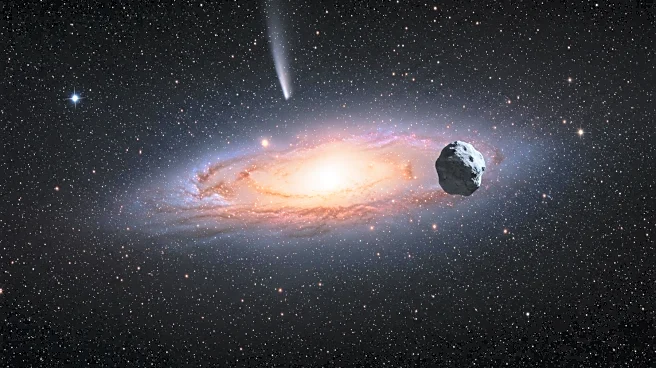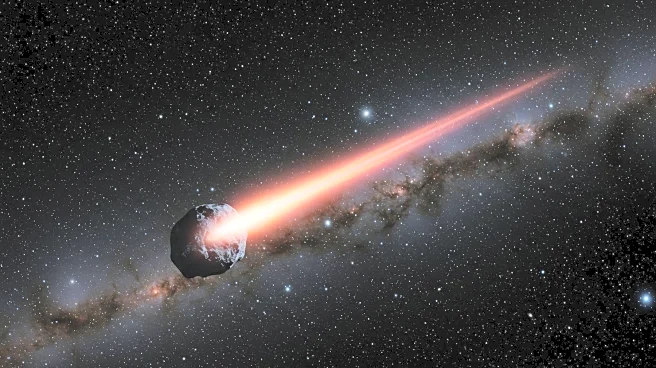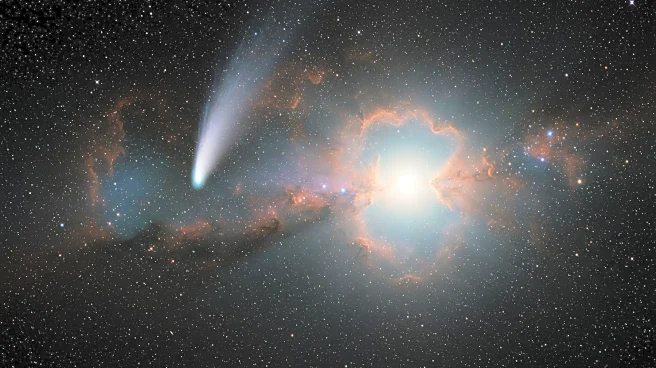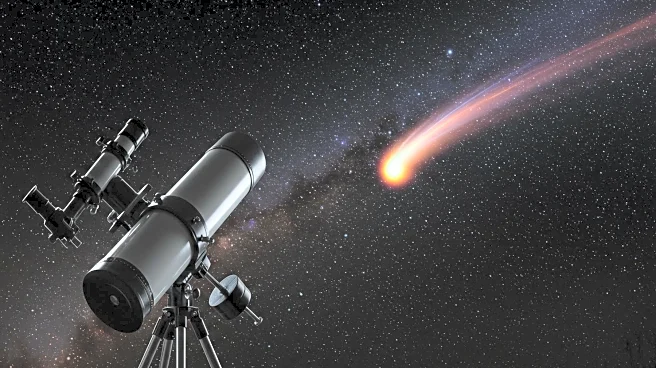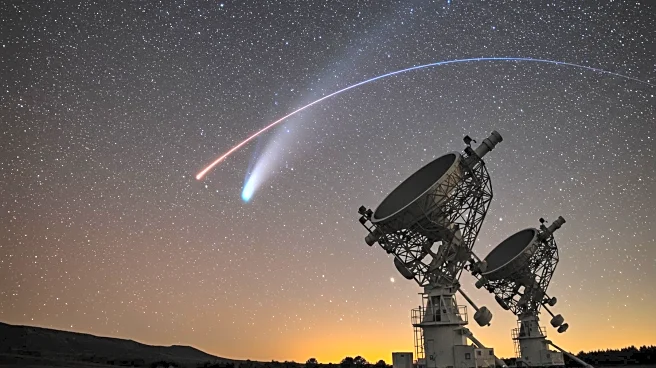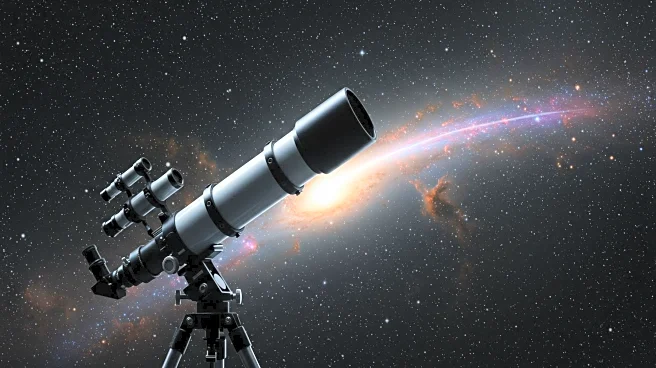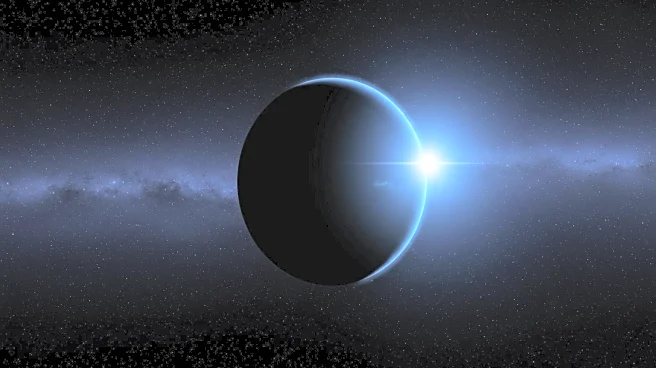Rapid Read • 8 min read
NASA's Hubble Space Telescope has captured the clearest image yet of the interstellar comet 3I/ATLAS, which is traveling through the solar system at a speed of 130,000 miles per hour. This observation is part of a broader effort by NASA's fleet of space telescopes to study the comet's size and physical properties. The comet's nucleus is estimated to be between 1,000 feet and 3.5 miles in diameter, although it cannot be directly seen even with Hubble's capabilities. The comet, originating from another solar system, is being studied to understand its chemical makeup and behavior, which resembles that of Sun-bound comets from within our solar system.
AD
The study of interstellar comets like 3I/ATLAS provides valuable insights into the composition and dynamics of objects from outside our solar system. Understanding these comets can help scientists learn more about the formation and evolution of other solar systems and the potential for similar objects to impact Earth. The high velocity of 3I/ATLAS suggests it has been traveling through interstellar space for billions of years, offering a unique opportunity to study the effects of long-term exposure to cosmic forces. This research contributes to NASA's mission to track and understand near-Earth objects, enhancing planetary defense strategies.
Observations from other NASA missions, including the James Webb Space Telescope and the Transiting Exoplanet Survey Satellite, will continue to refine knowledge about 3I/ATLAS. The comet is expected to remain visible to ground-based telescopes through September, after which it will pass too close to the Sun to observe. It is anticipated to reappear on the other side of the Sun by early December, allowing further study. The ongoing research will help identify more interstellar objects and improve detection capabilities.
The discovery of 3I/ATLAS highlights the existence of a previously undetected population of interstellar objects. As sky survey technologies improve, more such objects are likely to be identified, offering new opportunities for scientific exploration. The comet's journey through the solar system provides a glimpse into the vastness and complexity of the Milky Way galaxy, emphasizing the interconnectedness of celestial bodies across space.
AD
More Stories You Might Enjoy
